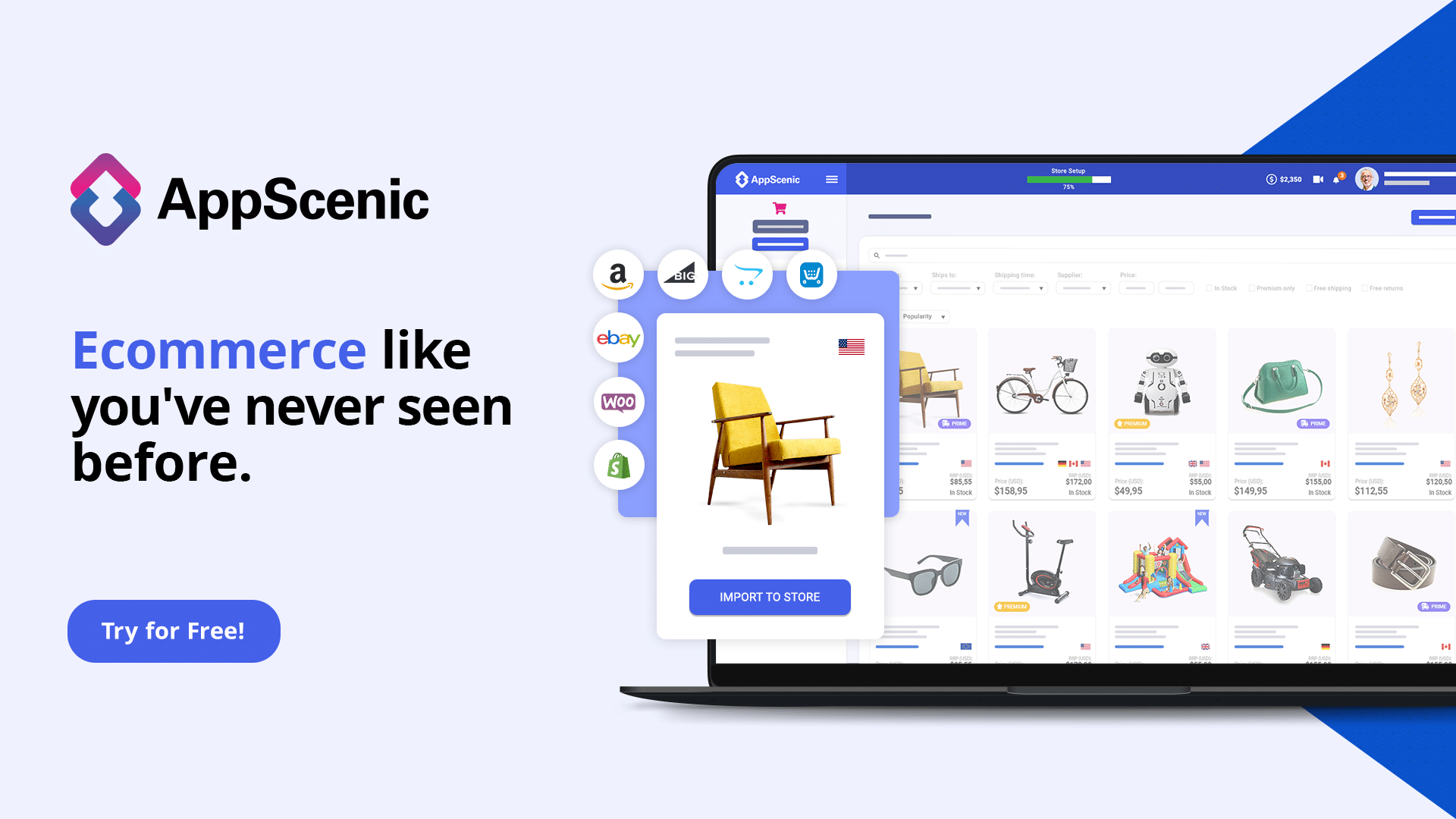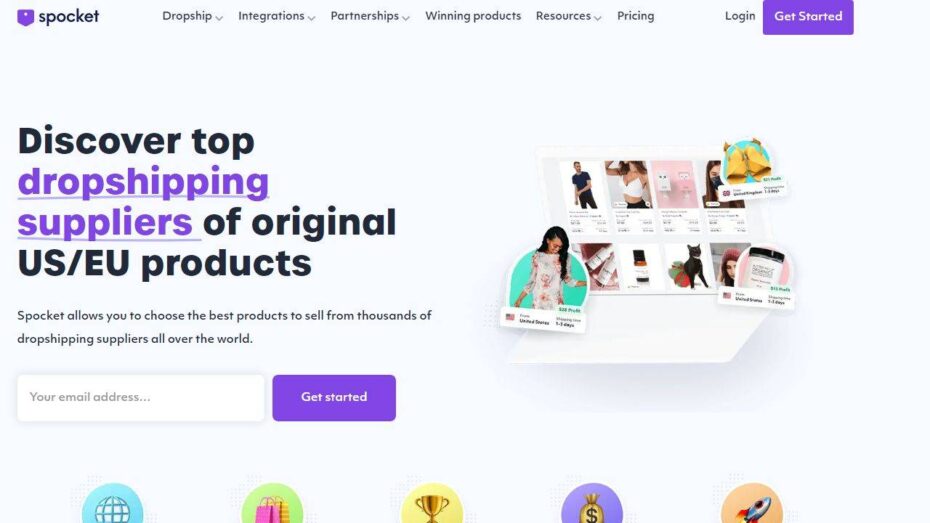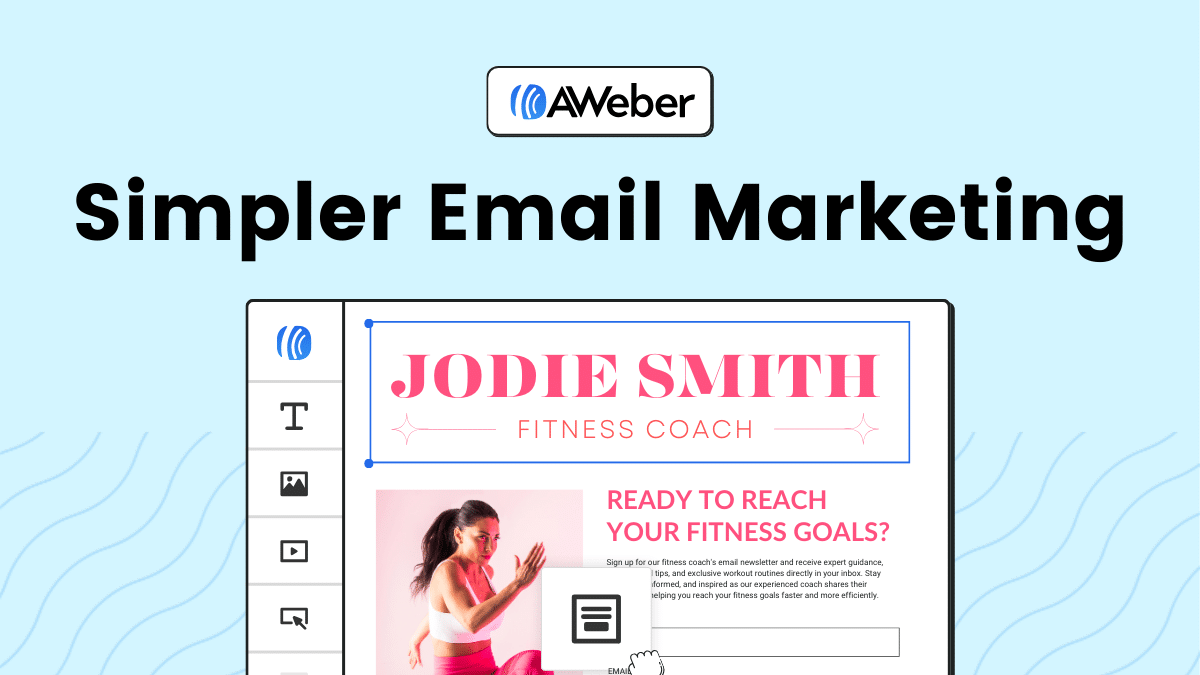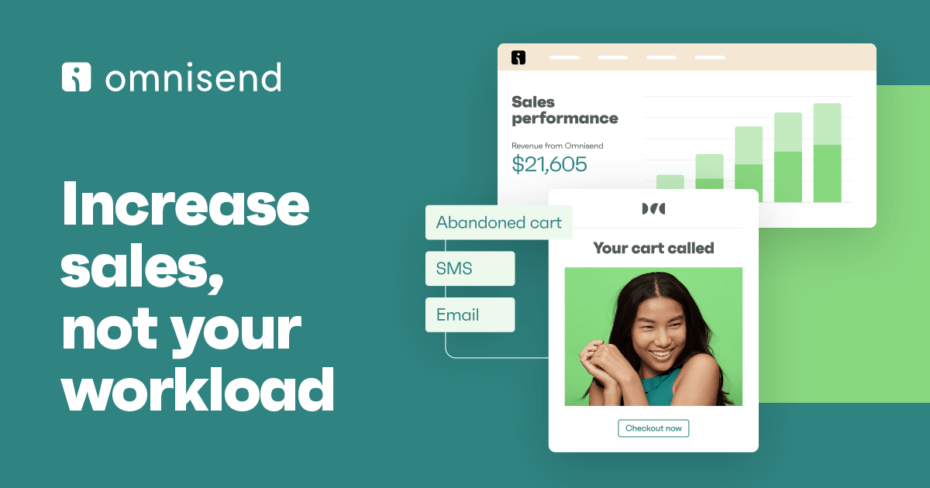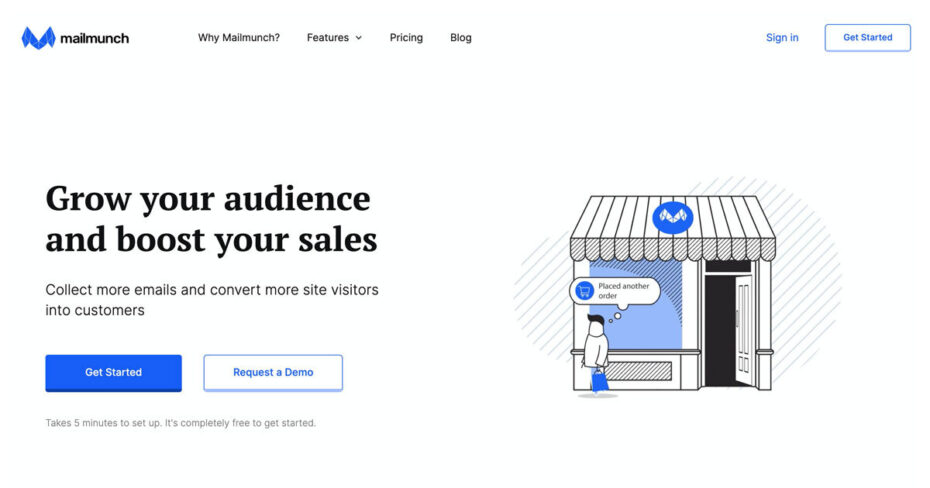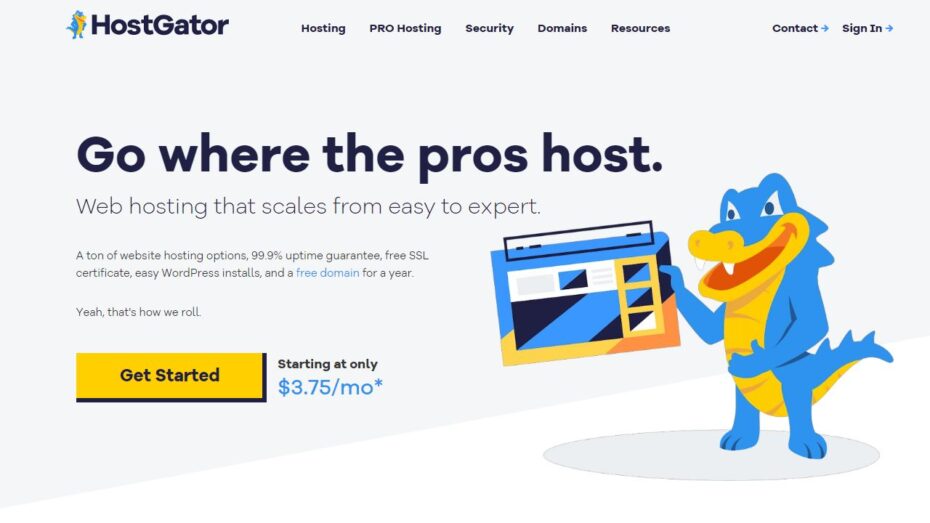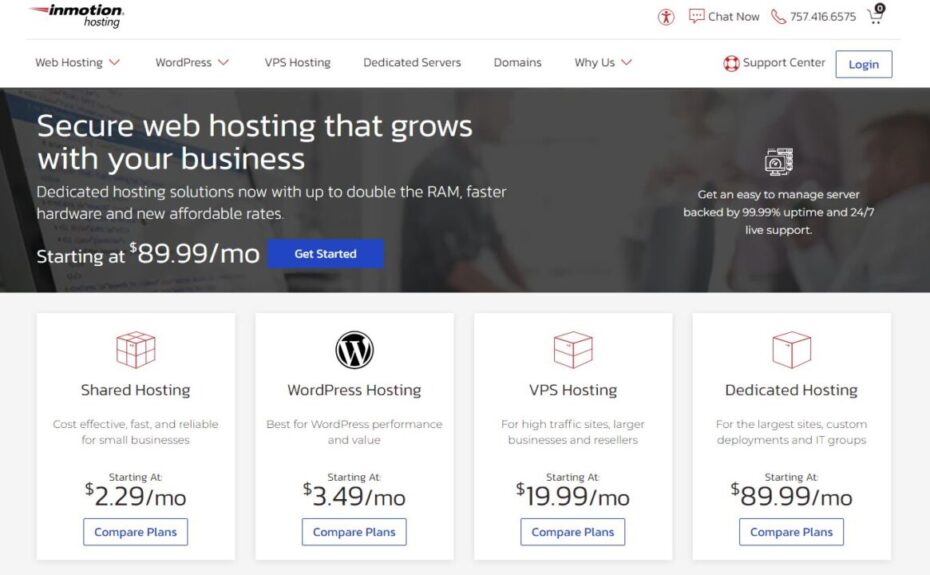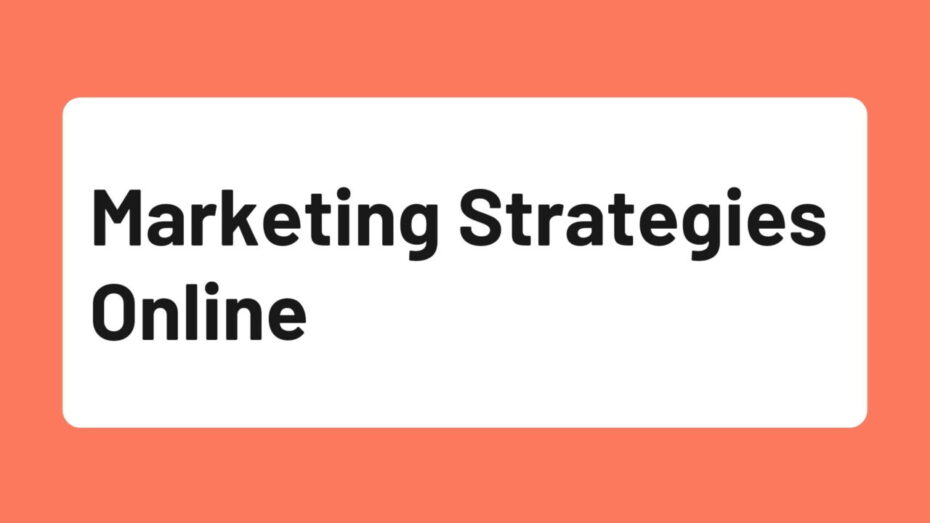Disclosure: This post contains affiliate links, which means that if you click on them and make a purchase, I will receive a commission. Read our Disclaimer for More.
Are you tired of the 9-to-5 grind and dream of earning a substantial income from the comfort of your home? Have you ever wondered how some people manage to make money from home, transforming their living spaces into sources of wealth and opportunity? What if I told you that achieving financial freedom while working from your favorite armchair isn’t just a dream, but a very attainable reality for those who know the secrets to success? In my experience, diving into the world of online entrepreneurship opens up a plethora of opportunities to earn, grow, and succeed. Let me guide you through the initial steps of making money from home, laying down a foundation for your path to financial independence.
Most importantly, the journey to making money from home starts with understanding the plethora of avenues available to you. From dropshipping and email marketing to affiliate marketing and blogging, each path offers unique advantages and challenges. I strongly believe that with the right guidance and persistence, anyone can tap into these digital goldmines. My suggestion is to consider your interests, skills, and the amount of time you can dedicate. This way, you can choose the most fitting route that not only promises financial rewards but also aligns with your passion and lifestyle.
I recommend starting with a clear mindset and realistic goals. Setting up a home-based business or starting a freelance endeavor requires patience, learning, and resilience. Success doesn’t come overnight, but with continuous effort and strategic planning, you will see your dreams materialize. From my perspective, the key to thriving in the make money from home arena lies in leveraging your strengths, being adaptable to change, and most importantly, never giving up on your vision for a better, financially secure future. Here’s how you can start your journey toward achieving financial freedom right from where you are.
The Essentials of Dropshipping: A $4.28 Trillion Market
Did you know that the global e-commerce market, including dropshipping, is projected to reach a staggering $4.28 trillion by the end of this year? This immense figure highlights the vast potential of dropshipping as a lucrative method to make money from home. Dropshipping allows entrepreneurs to sell products without holding any inventory, significantly reducing the barriers to entry in the e-commerce world. Most importantly, it opens up opportunities for individuals to participate in global markets from anywhere, leveraging the power of the internet and digital marketing strategies to reach customers worldwide.
I recommend starting by understanding the dropshipping model’s basics: you partner with suppliers to showcase their products on your website or online store. When a customer makes a purchase, the order is directly sent to the supplier, who then ships the product to the customer on your behalf. This process eliminates the need for upfront investment in inventory, making dropshipping an attractive option for budding entrepreneurs. However, success in dropshipping doesn’t just come from setting up a store; it requires strategic planning, market research, and a keen eye for trends.
Selecting winning products is the cornerstone of a successful dropshipping business. I would say that thorough market research and trend analysis are critical in identifying products that are not only in demand but also offer good profit margins. Tools like Google Trends, social media analytics, and e-commerce platforms‘ best-seller lists can provide invaluable insights into consumer behavior and emerging trends. From my perspective, the key is to find a balance between popular products and niches with lower competition to carve out your own space in the market.
I strongly believe that understanding your target audience is just as important as product selection. Knowing who you’re selling to, what their needs and preferences are, can guide your product selection process and marketing strategies. Tailoring your offerings to meet specific needs or solve particular problems can significantly increase your store’s appeal and customer loyalty. My suggestion is to leverage social media and online forums to engage with potential customers, gather feedback, and refine your product offerings based on what you learn.
Unveil the Secrets to Selecting Winning Products
The art of selecting winning products is what separates successful dropshippers from the rest. According to industry insights, only a fraction of products account for the majority of online sales, highlighting the importance of product selection in building a profitable dropshipping business. I think it’s essential to not just follow trends blindly but to analyze them within the context of your target market’s needs and preferences. This approach ensures that you’re not just selling a product but offering a solution that resonates with your audience.
In my experience, one of the best strategies for identifying potential winning products is to conduct competitive analysis. Look at what products are performing well for other dropshippers, especially those in your niche. However, my recommendation is to go beyond just copying what others are doing. Instead, look for ways to improve upon existing products or offer them in a unique context that appeals more directly to your target audience. This could involve bundling products together, offering improved customer service, or providing detailed product guides and tutorials.
Social proof and customer feedback play a pivotal role in selecting products that are likely to succeed. I suggest paying close attention to product reviews, customer questions, and feedback on social media and e-commerce platforms. Products with high ratings and positive reviews are more likely to be accepted by new customers. Moreover, analyzing negative feedback on competitors’ products can offer insights into what to avoid or how you could offer a better solution.
In my opinion, utilizing data analytics tools and software can dramatically streamline the process of selecting winning products. These tools can provide real-time data on sales trends, customer search behavior, and even predict future trends. By leveraging this data, you can make informed decisions about which products to add to your store. I strongly believe that combining these analytical tools with a deep understanding of your target market is a powerful strategy for uncovering products that not only sell well but also strengthen your brand’s position in the market. Remember, success in dropshipping is not just about selling; it’s about selling the right products to the right people at the right time.
Automate Your Success: Top Dropshipping Tools Revealed
In the bustling world of dropshipping, efficiency and automation are key to staying ahead of the competition. I believe that leveraging the right tools can significantly streamline your operations, from inventory management to order fulfillment and customer service. Most importantly, these tools can free up your time to focus on strategic aspects of your business, such as marketing and brand development. From my perspective, investing in automation tools is not just a convenience—it’s a necessity for scaling your business effectively.
One essential tool I recommend for dropshipping entrepreneurs is a reliable e-commerce platform, such as Shopify or WooCommerce. These platforms offer seamless integration with a multitude of dropshipping and inventory management apps, simplifying the process of listing products, managing orders, and tracking shipments. According to my experience, choosing a platform with robust support and a wide range of plugins can make a substantial difference in your store’s functionality and user experience. My suggestion is to carefully evaluate each platform’s features and costs to find the best fit for your business model.
Another crucial set of tools falls under the category of product sourcing and market research, such as Oberlo for Shopify users or SaleHoo. These tools offer access to a vast database of products and suppliers, allowing you to quickly find and import products to your store. I strongly believe that using these tools can save you countless hours of manual research, helping you to quickly adapt to market trends and consumer demands. Furthermore, they often provide valuable insights into product performance and competitive analysis, which can be instrumental in making informed decisions about your inventory.
Email marketing and customer relationship management (CRM) software are also indispensable tools for driving sales and building customer loyalty. Platforms like Omnisend or Klaviyo offer automation features that enable you to create personalized email campaigns, abandoned cart reminders, and loyalty programs without constant manual intervention. From my point of view, effectively engaging with your customers through automated, personalized communication is a powerful strategy to increase repeat purchases and customer lifetime value. My recommendation is to integrate these tools with your e-commerce platform to create a cohesive, automated marketing strategy that nurtures your customer base.
Scaling Your Store: Strategies for a 5-Figure Income
Scaling a dropshipping store to achieve a 5-figure income is a milestone many entrepreneurs aspire to. However, achieving this level of success requires strategic planning and execution. I think one of the first steps to scaling effectively is to diversify your product offerings while ensuring they align with your brand and target market. This approach not only increases your store’s appeal but also mitigates risks associated with relying on a few bestsellers. According to my estimation, carefully curated product expansion can lead to higher average order values and repeat customer purchases.
Investing in advanced digital marketing strategies is another key factor in scaling your dropshipping business. I would say that mastering paid advertising channels such as Facebook Ads, Google AdWords, and Instagram advertising can dramatically increase your store’s visibility and traffic. Most importantly, it allows you to target specific demographics with precision, optimizing your advertising spend for the best possible return on investment. My recommendation is to continuously test and refine your ad campaigns to uncover the most profitable strategies and audiences for your products.
Building a strong brand identity and fostering customer loyalty are also critical for long-term growth. I believe that creating a unique and memorable brand experience through quality product images, compelling descriptions, and exceptional customer service can significantly differentiate your store in a crowded marketplace. Implementing loyalty programs and engaging with your customers on social media can further strengthen your brand and encourage word-of-mouth referrals. From my perspective, a loyal customer base is an invaluable asset for scaling your business.
Finally, optimizing your store’s operations for efficiency and cost-effectiveness is essential as you scale. I recommend regularly analyzing your supply chain and logistics to identify opportunities for cost savings and faster shipping times. Streamlining these processes can improve customer satisfaction and profit margins, key components of scaling to a 5-figure income.
Mastering Email Marketing: Unlock a 4200% ROI
“Email has an ability many channels don’t: creating valuable, personal touches—at scale.” – David Newman. This insightful observation underlines the immense potential of email marketing, a tool that, when wielded with expertise, can unlock a staggering 4200% return on investment (ROI). In a digital age where personal connection and value are paramount, mastering email marketing is not just an option but a necessity for businesses aiming to thrive. The key to unlocking this potential lies in understanding your audience, delivering value, and consistently refining your approach based on data and feedback.
I suggest starting with the basics of segmenting your email list. This allows you to tailor your messages according to the specific interests and needs of different audience segments. Personalization goes beyond just inserting a recipient’s name; it involves crafting content that resonates with their unique preferences and behaviors. According to studies, emails that are highly personalized can drive up to six times higher transaction rates. From my perspective, segmentation and personalization are not just strategies but the backbone of effective email marketing.
Another critical aspect is the quality of your content. I strongly believe that providing genuine value through your emails is what separates the best marketers from the rest. This could be in the form of insightful articles, exclusive deals, or personal stories that engage and inspire. Remember, the goal of email marketing is to build a relationship with your subscribers, not just to sell. My recommendation is to consistently deliver content that enriches your audience’s lives, which in turn, fosters loyalty and trust.
In my experience, timing and frequency also play pivotal roles in the success of your email marketing campaigns. Sending emails at the right time can significantly increase open rates and engagement. However, bombarding your subscribers with too many emails can lead to list fatigue and high unsubscribe rates. It seems to me that finding the perfect balance requires experimentation and adaptation to your audience’s preferences. I would say that starting with industry best practices and then tweaking based on your analytics is a solid approach.
Email Marketing Recommendations
Aweber
| Omnisend
| Mailmunch
|
Crafting Irresistible Emails: Tips from Pros
“Make every detail perfect, and limit the number of details to perfect.” – Jack Dorsey. This quote perfectly encapsulates the essence of crafting irresistible emails. It’s not just about the content but also about how it’s presented. The first step to capturing your audience’s attention is with a compelling subject line. I recommend spending as much time on the subject line as you do on the email content itself. An intriguing subject line increases the likelihood of your email being opened, which is the first hurdle in engaging your audience.
The structure of your email is equally important. In my opinion, the best emails are those that are easy to read and visually appealing. Use short paragraphs, bullet points, and bold headings to break up text and guide your reader through the message. Including images or videos can also enhance engagement, but it’s crucial to ensure they add value and don’t detract from the message. From my perspective, every element in your email should serve a purpose, whether it’s to inform, entertain, or call to action.
Speaking of calls to action (CTAs), they are a critical component of any email intended to drive conversions. I strongly believe that a clear, compelling CTA can make the difference between an email that converts and one that doesn’t. It’s important to keep your CTA concise and to the point, making it clear what you want the reader to do next. My suggestion is to experiment with different CTA placements and styles to see what works best for your audience.
Finally, testing and optimization should be an ongoing part of your email marketing strategy. A/B testing different elements of your emails, such as subject lines, content, and CTAs, can provide valuable insights into what resonates with your audience. In my estimation, the most successful email marketers are those who are constantly learning from their data and are willing to adapt their strategies accordingly. If you ask me, the key to crafting irresistible emails lies in understanding your audience deeply and continuously striving to deliver more value.
Segmentation Magic: Boost Engagement & Sales
“Segmentation is saying something to somebody instead of saying nothing to everybody.” This approach is fundamental in transforming your email marketing strategy from good to great. I believe that segmentation is the key to delivering personalized experiences to your audience, significantly boosting engagement and sales. By dividing your email list based on criteria such as demographics, purchase history, and behavior, you can tailor your messages to meet the specific needs and interests of different segments. Most importantly, segmentation allows you to send relevant content that resonates with your audience, thereby enhancing the effectiveness of your email campaigns.
I recommend leveraging data analytics to understand your audience better and create more defined segments. This could involve analyzing purchase behavior, engagement rates, and even feedback received through surveys. According to my experience, the more granular your segmentation, the higher the chances of your emails hitting the mark. By addressing the unique preferences and pain points of each segment, you can foster a deeper connection with your subscribers, encouraging loyalty and repeat business. From my perspective, segmentation is not just a tactic but a strategic approach to building lasting relationships with your customers.
Another critical aspect of segmentation is its impact on your ROI. I would say that by sending targeted campaigns to specific segments, you’re more likely to see higher open rates, click-through rates, and conversions. It seems to me that this focused approach not only improves the efficiency of your marketing efforts but also significantly reduces the likelihood of your emails being marked as spam. My suggestion is to continuously refine your segments based on ongoing data analysis, allowing for even more personalized and effective email campaigns.
Finally, don’t overlook the power of testing within your segments. I strongly believe that A/B testing different elements of your emails, from subject lines to calls to action, can provide invaluable insights into what resonates best with each segment. In my estimation, regular testing and optimization based on real data are critical for enhancing the relevance and impact of your segmented email campaigns. If you ask me, the magic of segmentation lies in its ability to turn data into actionable insights, leading to more engaging and successful email marketing strategies.
Automation Tools: Work Smarter, Not Harder
“Innovation needs to be part of your culture. Consumers are transforming faster than we are, and if we don’t catch up, we’re in trouble.” This quote by Ian Schafer highlights the importance of embracing automation in today’s fast-paced digital landscape. Email marketing automation tools are indispensable for marketers looking to efficiently scale their efforts while maintaining a personal touch. I think automation is a game-changer, enabling you to send timely, relevant messages to your audience without the need for constant manual intervention. Most importantly, it allows you to focus your time and resources on strategic planning and creative content creation.
I recommend starting with automation tools that offer easy integration with your existing email platform. These tools can help you automate welcome emails, lead nurturing sequences, and transactional messages, among other things. According to my experience, setting up automated workflows based on specific triggers and behaviors can significantly enhance the customer experience, leading to improved engagement and conversion rates. From my perspective, the key to successful automation lies in understanding your customer journey and identifying opportunities to add value at each stage.
Another aspect where automation tools shine is in their ability to facilitate personalized communication at scale. I would say that by using data-driven insights to segment your audience and personalize your messages, you can make each subscriber feel valued and understood. This level of personalization, powered by automation, can lead to deeper relationships and increased loyalty among your customer base. My recommendation is to leverage automation to deliver content that meets your audience’s needs and preferences, thereby maximizing the relevance and impact of your email marketing efforts.
Lastly, the analytical capabilities of automation tools cannot be overstated. I strongly believe that the ability to track and analyze the performance of your email campaigns in real-time is crucial for continuous improvement. These tools provide detailed metrics on open rates, click-through rates, conversion rates, and more, allowing you to fine-tune your strategies for better results. In my estimation, embracing automation tools is not just about working smarter, not harder; it’s about staying ahead in a competitive digital environment.
Affiliate Marketing Mastery: Earn While You Sleep
Just as a well-oiled machine runs smoothly and efficiently, a finely tuned affiliate marketing strategy can generate income effortlessly, even while you sleep. This comparison highlights the passive income potential of affiliate marketing, a business model where you earn commissions by promoting other people’s products. Most importantly, the success of affiliate marketing hinges on choosing the right products to promote—a task that requires strategic thinking and a keen understanding of your audience. With the right approach, affiliate marketing can be a lucrative way to monetize your online presence, offering a unique opportunity to generate revenue without the need for product development or customer service.
I suggest starting by identifying your niche and understanding the needs and preferences of your audience. This foundational step is crucial because promoting products that resonate with your audience increases the likelihood of conversion. According to my experience, affiliates who succeed are those who authentically recommend products they believe in, which align with the content they produce. This alignment not only helps in building trust with your audience but also significantly improves conversion rates. From my perspective, choosing products that you are passionate about and that add genuine value to your audience is key to affiliate marketing success.
Another critical aspect is to research and partner with reputable affiliate programs that offer competitive commissions, reliable tracking, and timely payments. I recommend looking for programs that provide marketing support in the form of banners, links, and product information to help you create compelling content. It seems to me that programs which offer transparency in terms of performance metrics and insights can also be incredibly beneficial, allowing you to optimize your promotional strategies based on real data. My suggestion is to carefully evaluate potential affiliate programs, considering factors like commission structure, product quality, and the program’s reputation in the market.
Lastly, I strongly believe in the power of continuous learning and adaptation in affiliate marketing. The digital landscape is constantly evolving, with new products, platforms, and strategies emerging regularly. Keeping abreast of industry trends and being willing to test and refine your approach is crucial.
Choosing the Right Products: A Step-by-Step Guide
Choosing the right products to promote is akin to a chef selecting the perfect ingredients for a signature dish. Just as the quality and compatibility of ingredients can elevate a dish, the right products can significantly impact the success of your affiliate marketing efforts. Most importantly, the products you choose should align with your audience’s interests and needs, enhancing your credibility and trustworthiness as an affiliate. Here’s how you can start the process of selecting the most suitable products for your affiliate marketing endeavors.
I recommend beginning with a thorough analysis of your audience. Understanding who your audience is, what problems they are trying to solve, and what products they are currently interested in, is fundamental. Conducting surveys, analyzing engagement on social media, and monitoring comments and questions can provide invaluable insights into your audience’s preferences. From my perspective, this deep understanding of your audience will serve as a compass guiding your product selection process, ensuring you choose products that genuinely resonate and provide value.
Next, consider the product’s relevance and demand. I would say that a product might be excellent, but if it’s not relevant to your audience or if there’s no substantial demand for it, it’s unlikely to perform well. Utilizing tools like Google Trends and keyword research can help gauge interest and demand for specific products. It seems to me that promoting products with a proven track record of sales or emerging products in trending niches can be particularly effective strategies.
Another key factor is the quality and reliability of the product. I strongly believe that promoting high-quality products not only enhances your reputation but also increases the likelihood of repeat purchases. It’s beneficial to personally test the products or thoroughly research reviews and feedback from other users. My impression is that becoming an advocate for products you have personally vetted and believe in can significantly enhance your authenticity and the trust your audience places in you.
SEO for Affiliate Sites: Rank Higher, Earn More
Optimizing your affiliate site for search engines is akin to laying down a solid foundation for a skyscraper. Without a strong foundation, even the most visually appealing skyscraper won’t stand tall. Similarly, without SEO, your affiliate site may struggle to attract the traffic it needs to generate sales. The goal of SEO for affiliate sites is not just to drive any traffic, but to attract targeted visitors who are interested in what you’re promoting. Implementing strategic SEO practices can significantly increase your site’s visibility, ranking, and, ultimately, its revenue potential.
Keyword research is the cornerstone of effective SEO. Identifying the right keywords—those your target audience is searching for—is crucial. I recommend using tools like SeoPowersuite or SEMrush to find relevant keywords with high search volumes and manageable competition. It’s important to focus on long-tail keywords, as they often have less competition and a higher conversion rate. From my perspective, incorporating these keywords naturally into your content, including titles, headings, and meta descriptions, can make a substantial difference in how your site ranks.
On-page optimization is another critical element. This includes optimizing your content’s quality and structure, ensuring fast loading speeds, and making your site mobile-friendly. I strongly believe that creating valuable, informative content that meets your audience’s needs is key to engaging visitors and encouraging them to take action. Moreover, optimizing images, using internal linking, and ensuring your site is easy to navigate can enhance user experience, which is a significant factor in Google’s ranking algorithm.
Backlinking is the process of getting other reputable sites to link to yours, and it’s vital for increasing your site’s authority and search ranking. I suggest creating high-quality content that naturally attracts backlinks, such as comprehensive guides, informative blog posts, or compelling infographics. Additionally, guest posting on relevant websites can also be a great way to build backlinks. In my estimation, a strategic approach to building backlinks can dramatically improve your site’s visibility and authority in the eyes of search engines.
Convert Clicks to Cash: Advanced Conversion Tactics
Once visitors land on your affiliate site, the next challenge is converting those clicks into cash. Conversion optimization is crucial for maximizing the profitability of your affiliate marketing efforts. It’s not enough to just attract traffic; you need to persuade those visitors to click through and make a purchase. This involves a deep understanding of your audience’s needs and preferences, as well as a strategic approach to designing your site and content.
The first step is to ensure your site design is optimized for conversions. This includes having a clean, professional layout that’s easy to navigate. I recommend focusing on the user experience, ensuring that your site loads quickly, is mobile-friendly, and that the call-to-action (CTA) buttons are prominently displayed and compelling. A/B testing different designs and CTAs can provide valuable insights into what works best for your audience.
Creating compelling product reviews and comparisons is a powerful way to drive conversions. I believe that providing honest, detailed reviews that highlight the benefits and potential drawbacks of the products can help build trust with your audience. It’s essential to provide all the information a potential buyer might need to make an informed decision, including personal experiences, if possible. Incorporating user-generated content, such as customer reviews and testimonials, can also significantly enhance credibility.
Leveraging email marketing is another effective strategy to boost conversions. By building an email list of visitors interested in your niche, you can keep them engaged with valuable content, updates, and exclusive offers. I think personalized email campaigns that cater to the specific interests and needs of your subscribers can be incredibly effective in driving repeat traffic and conversions. My suggestion is to use segmentation and automation tools to tailor your messages and offers, making them as relevant and appealing as possible.
Blogging: A Path to Earning $10,000/Month from Home
While it’s true that not every blog will reach the milestone of earning $10,000/month, it’s equally true that blogging presents a viable path to such an income for those who approach it with strategy and dedication. Blogging has evolved from a simple hobby to a powerful platform for sharing knowledge, influencing opinions, and, most importantly, generating revenue. With the right niche, content strategy, and monetization methods, achieving a five-figure monthly income from blogging is not just a dream but a realistic goal. The journey to this level of success requires understanding your audience, consistently delivering value, and leveraging various income streams to monetize your blog effectively.
I recommend starting with a clear understanding of the blogging landscape. It’s essential to recognize that blogging is a long-term commitment and not a get-rich-quick scheme. Success in blogging comes from passion, patience, and perseverance. From my perspective, the first step to building a profitable blog is to choose a niche that you’re passionate about and that has a viable audience. This passion will drive you to create compelling content and endure the challenges that come with growing a blog.
Another key to success is creating high-quality, valuable content that meets the needs and interests of your target audience. I strongly believe that content is king in the blogging world. Your blog needs to solve problems, answer questions, or provide insights that are not readily available elsewhere. This unique value proposition will help you attract and retain a loyal readership, which is crucial for monetizing your blog through advertising, affiliate marketing, sponsored posts, or selling digital products.
Engagement and promotion are also vital components of a successful blog. I would say that building a community around your blog through social media, email newsletters, and direct engagement with readers can significantly boost your blog’s visibility and traffic. According to my experience, actively promoting your blog and engaging with your audience can lead to higher traffic, which is essential for increasing your blog’s earning potential through ads and affiliate links.
Niche Selection: Finding Your Profitable Corner
Choosing the right niche is like setting the foundation for a house; it determines the stability and success of your entire blogging endeavor. A common misconception is that to be profitable, one must target broad, highly competitive niches. However, I believe that finding a specific, underserved niche can be much more effective. This approach allows you to become an authority within your niche, reducing competition and increasing the loyalty of your audience. Most importantly, a well-defined niche makes it easier to create targeted content, attract engaged readers, and monetize your blog more effectively.
I recommend conducting thorough market research to identify potential niches. Look for subjects that interest you and have a sustainable audience. Utilizing tools like Google Trends and keyword research platforms can provide insights into what people are searching for and help gauge the competitiveness and profitability of different niches. From my perspective, the ideal niche strikes a balance between your interests, audience demand, and monetization potential. This alignment ensures that you’re not only passionate about your content but that there’s also a viable market for it.
Understanding your audience is crucial once you’ve selected a niche. I suggest creating detailed audience personas to better understand the needs, challenges, and interests of your readers. This understanding will guide your content strategy, helping you create posts that resonate with your audience, address their specific needs, and encourage engagement. In my estimation, blogs that succeed in deeply connecting with their readers are the ones that see higher loyalty, more shares, and better monetization opportunities.
Finally, consider the long-term potential of your chosen niche. I strongly believe that selecting a niche with room for growth and evolution is essential for sustaining your blog’s success over time. It’s important to assess whether the niche can adapt to changes in trends and consumer interests. My impression is that niches related to enduring human needs and interests tend to offer the most sustainable paths to success. If you ask me, taking the time to choose the right niche is one of the most critical steps in building a profitable blogging business.
Content that Ranks: SEO Writing for Bloggers
In the vast sea of online content, making your blog stand out to both readers and search engines is akin to finding a beacon of light in the darkness. SEO writing is not just about incorporating keywords; it’s an art that combines relevance, value, and strategic placement to signal search engines about the quality and context of your content. Most importantly, it’s about creating content that satisfies the searcher’s intent, making your blog a go-to resource. For bloggers aiming to increase their visibility, mastering SEO writing is crucial. It enhances your blog’s discoverability and, in turn, its potential to attract a larger audience.
I recommend starting with thorough keyword research to understand what your target audience is searching for. Tools like Serpstat WW and Ahrefs can offer insights into search volumes, competition levels, and related queries. However, it’s essential to weave these keywords naturally into your content, maintaining a balance between SEO and readability. From my perspective, the best SEO writing answers questions, solves problems, or provides unique insights, all while subtly integrating target keywords.
Another critical aspect of SEO writing for bloggers is optimizing your titles and meta descriptions. These elements are your content’s first impression on search engine results pages (SERPs). Crafting compelling, keyword-rich titles and descriptions can significantly improve your click-through rates. According to my experience, titles that evoke curiosity or promise a solution tend to perform better. My suggestion is to keep your titles concise yet descriptive, giving potential readers a clear reason to click on your content.
Lastly, the structure of your content plays a pivotal role in SEO. Using headings (H1, H2, H3) not only improves readability but also helps search engines understand the hierarchy and relevance of your content. I strongly believe in the importance of making your articles skimmable for readers by breaking them into sections with subheadings. This not only enhances user experience but also contributes to better indexing by search engines.
Monetization Strategies: Beyond AdSense
While AdSense is often the go-to monetization strategy for many bloggers, the digital landscape offers a plethora of opportunities to generate revenue from your blog. Diversifying your income streams can not only increase your earnings but also provide financial stability. Most importantly, exploring monetization strategies beyond AdSense allows you to tailor your revenue-generating efforts to match your blog’s content, audience, and values. For bloggers looking to maximize their income potential, understanding and implementing a variety of monetization strategies is key.
I suggest affiliate marketing as a powerful alternative to AdSense. By promoting products or services relevant to your niche and audience, you can earn commissions for every purchase made through your referral links. According to my experience, successful affiliate marketing relies on trust and transparency with your audience. My recommendation is to only endorse products you have personally used or believe in, as this will maintain your credibility and foster trust with your readers.
Another lucrative monetization strategy is creating and selling digital products, such as ebooks, courses, or downloadable guides. This approach allows you to leverage your expertise and the trust you’ve built with your audience to offer high-value products directly. From my perspective, digital products have the potential to generate significant revenue, especially if they address specific needs or problems within your niche. I believe that listening to your audience’s feedback can provide insights into what products would be most beneficial and successful.
Sponsored content and partnerships with brands can also be a substantial revenue stream for bloggers. This involves collaborating with companies to create content that promotes their products or services. I strongly believe that the key to successful sponsored content is alignment between the brand’s offerings and your audience’s interests. My suggestion is to maintain transparency about sponsorships, ensuring your audience understands when content is sponsored. In my estimation, thoughtful partnerships that add value to your audience can enhance your blog’s content while providing financial benefits.
Conclusion: Realize Your Dream of Financial Independence
Achieving financial independence through online endeavors is a journey that many dream of, yet it requires dedication, strategy, and, most importantly, action. The paths of dropshipping, email marketing, affiliate marketing, and blogging each offer unique opportunities to build a sustainable income from the comfort of your home. However, success in these ventures doesn’t happen overnight. It demands continuous learning, adaptation, and a commitment to providing value. Realizing your dream of financial independence is within reach if you approach it with a clear plan and persistence.
I recommend starting with a clear goal and a detailed plan. Whether you’re drawn to the scalability of dropshipping, the precision of email marketing, the partnership potential of affiliate marketing, or the creative outlet of blogging, setting specific, measurable objectives is crucial. According to my experience, those who succeed are the ones who treat their online endeavors as real businesses. This means dedicating time to research, planning, execution, and, most importantly, understanding your audience. From my perspective, connecting with your audience on a genuine level is the cornerstone of any successful online business.
Another critical aspect is diversification. I strongly believe in not putting all your eggs in one basket. As you start to generate income, explore other avenues and strategies to diversify your income streams. This could mean expanding your product line in dropshipping, testing new email marketing techniques, exploring different affiliate programs, or incorporating various monetization strategies in your blog. My suggestion is to keep an open mind and be willing to experiment with new ideas. Diversification not only increases your potential income but also provides a safety net should one stream start to dwindle.
Lastly, never underestimate the power of community and networking. Joining online forums, attending webinars, and connecting with like-minded individuals can provide invaluable insights and support. From my experience, learning from others’ successes and failures can significantly accelerate your own journey to financial independence. I am of the view that the more you invest in your growth and the growth of your community, the closer you’ll get to realizing your dream. If you ask me, with determination, adaptability, and a focus on providing value, achieving financial independence through online endeavors is not just a dream but a tangible goal.
Remember, the path to financial independence is a marathon, not a sprint. It takes time, effort, and resilience, but the rewards—both financial and personal—are well worth the effort. Start today, and step by step, you’ll move closer to making your dream a reality.


